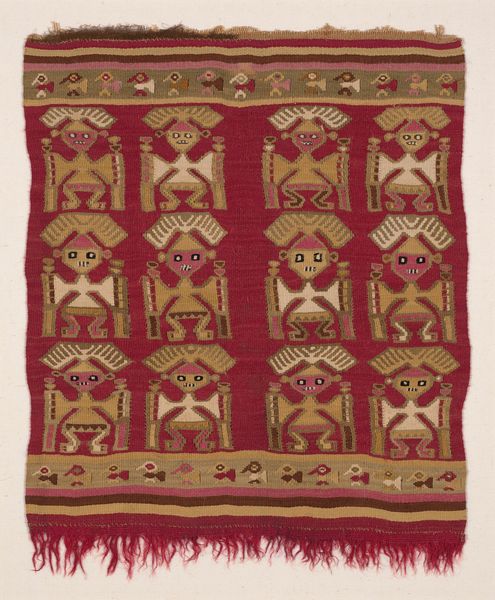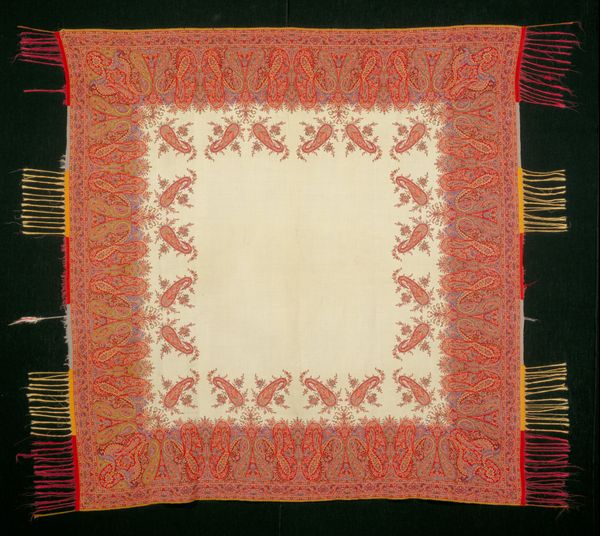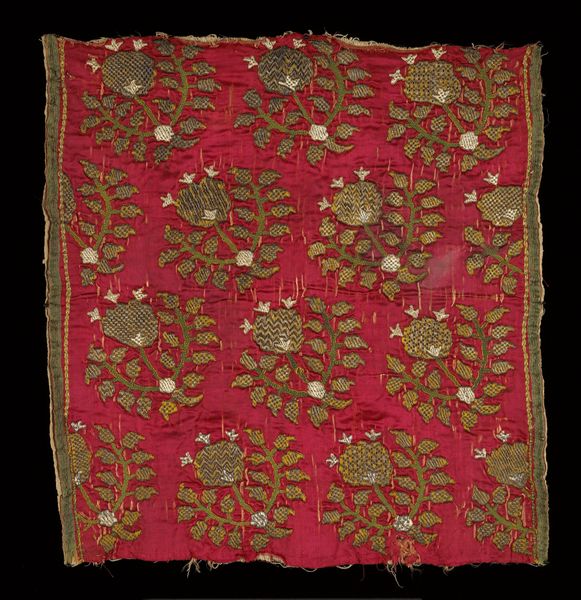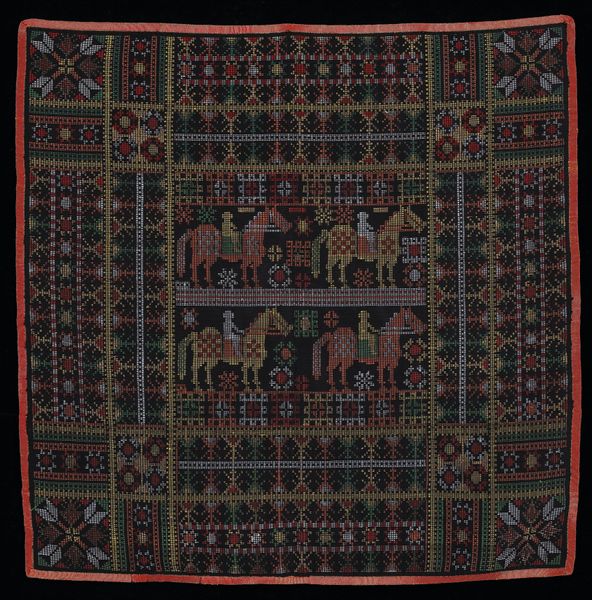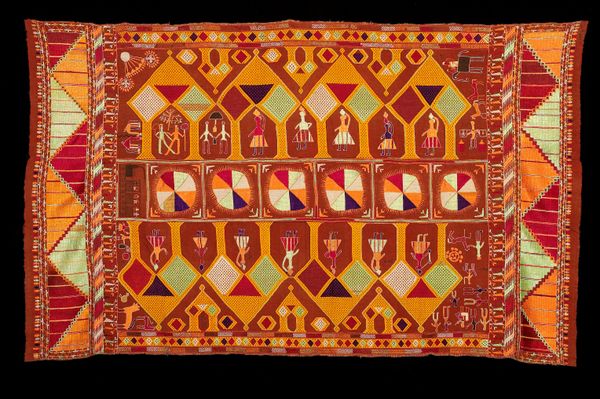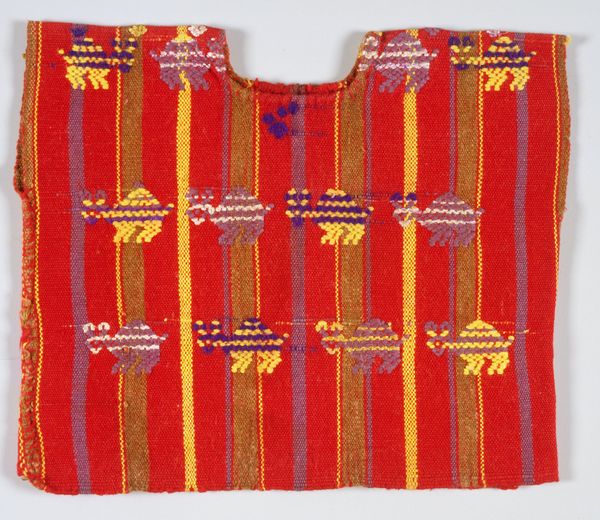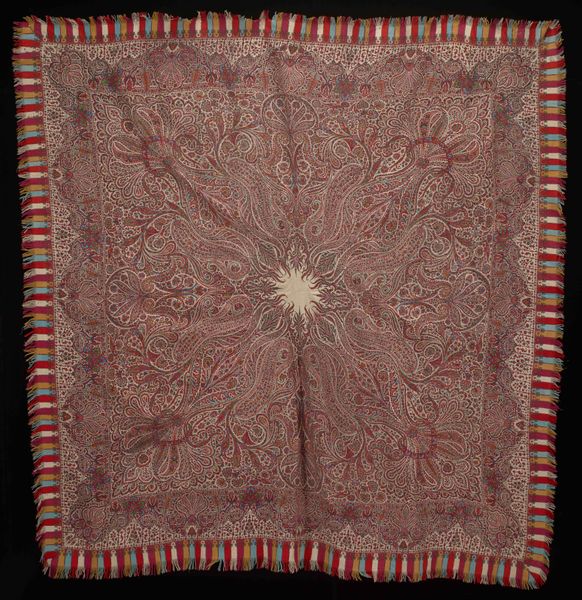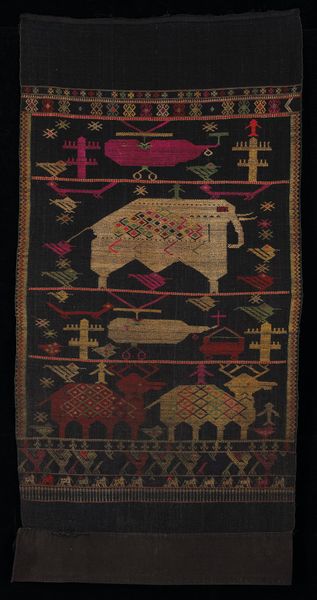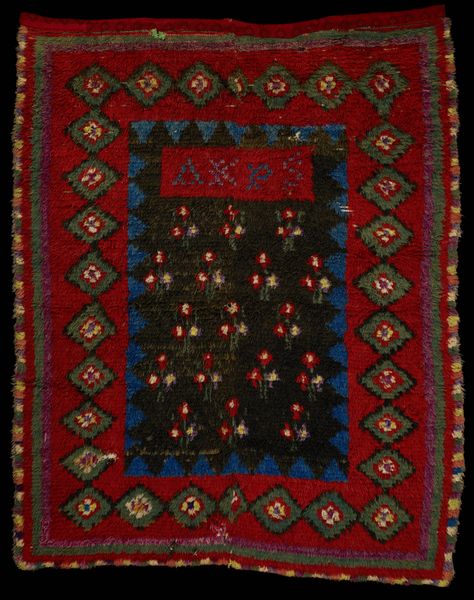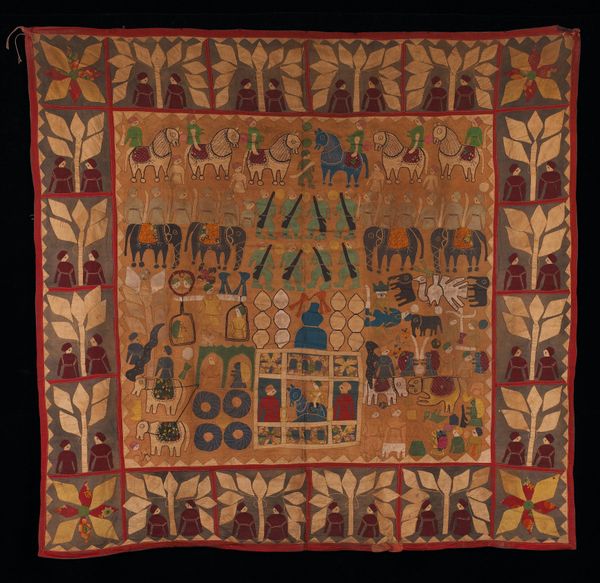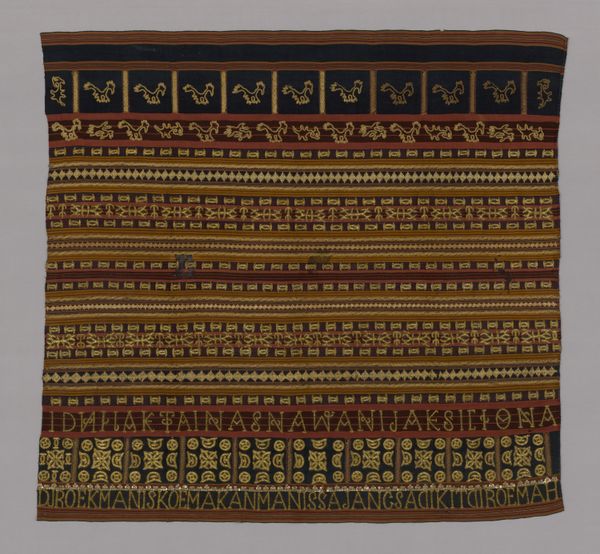
fibre-art, weaving, textile, cotton
#
pattern heavy
#
natural stone pattern
#
fibre-art
#
naturalistic pattern
#
weaving
#
textile
#
geometric pattern
#
abstract pattern
#
organic pattern
#
repetition of pattern
#
pattern repetition
#
cotton
#
textile design
#
layered pattern
#
indigenous-americas
Dimensions: 25 x 25 in. (63.5 x 63.5 cm)
Copyright: Public Domain
Curator: Here we have a remarkable textile, a Maya "tzute" or cloth, dating back to the early 20th century. These cloths held significant cultural importance. Editor: It’s strikingly graphic, isn’t it? The insistent red ground, the horizontal stripes creating a rhythmic pulse. And those stylized animal forms, rendered in such vibrant, almost jewel-like colors. Curator: Indeed. "Tzutes" like these were often used as head coverings, for ceremonial purposes, or as carrying cloths. The designs aren’t simply decorative; they often encode specific meanings or stories related to the wearer's community and social status. Editor: So the textile functions almost as a narrative map. The animals, though somewhat abstracted, offer recognizable forms—birds, perhaps horses? I find the arrangement fascinating, these regimented rows giving way to individual variation in color and pattern. Curator: Exactly. The repetition of motifs certainly speaks to the cultural context—shared beliefs, community identity. But it's important to remember that this was likely a product of an individual artisan, so the specific rendering of the animals, the particular color choices, could reflect personal expression. These textiles existed within a specific economic and social landscape where certain materials were available. Also the value, how artisans are positioned is always determined by that larger social view. Editor: I'm drawn to the texture. Looking closely, I can imagine the warp and weft of the cotton and silk, the deliberate placement of each thread to form these complex patterns. There’s a real sense of the maker's hand, the intimacy of creation. Curator: Considering this piece, beyond its pure aesthetics, allows us to understand the historical, social, and individual narratives interwoven into its very fabric. The “tzute” is a tangible representation of Maya identity and resistance in the face of colonial influences, and offers insight to those voices that resist through artmaking today. Editor: Seeing such structure and nuance is impressive, and is also really compelling—makes one contemplate all the hands and techniques necessary for even such a small finished square to have ever been created.
Comments
No comments
Be the first to comment and join the conversation on the ultimate creative platform.
